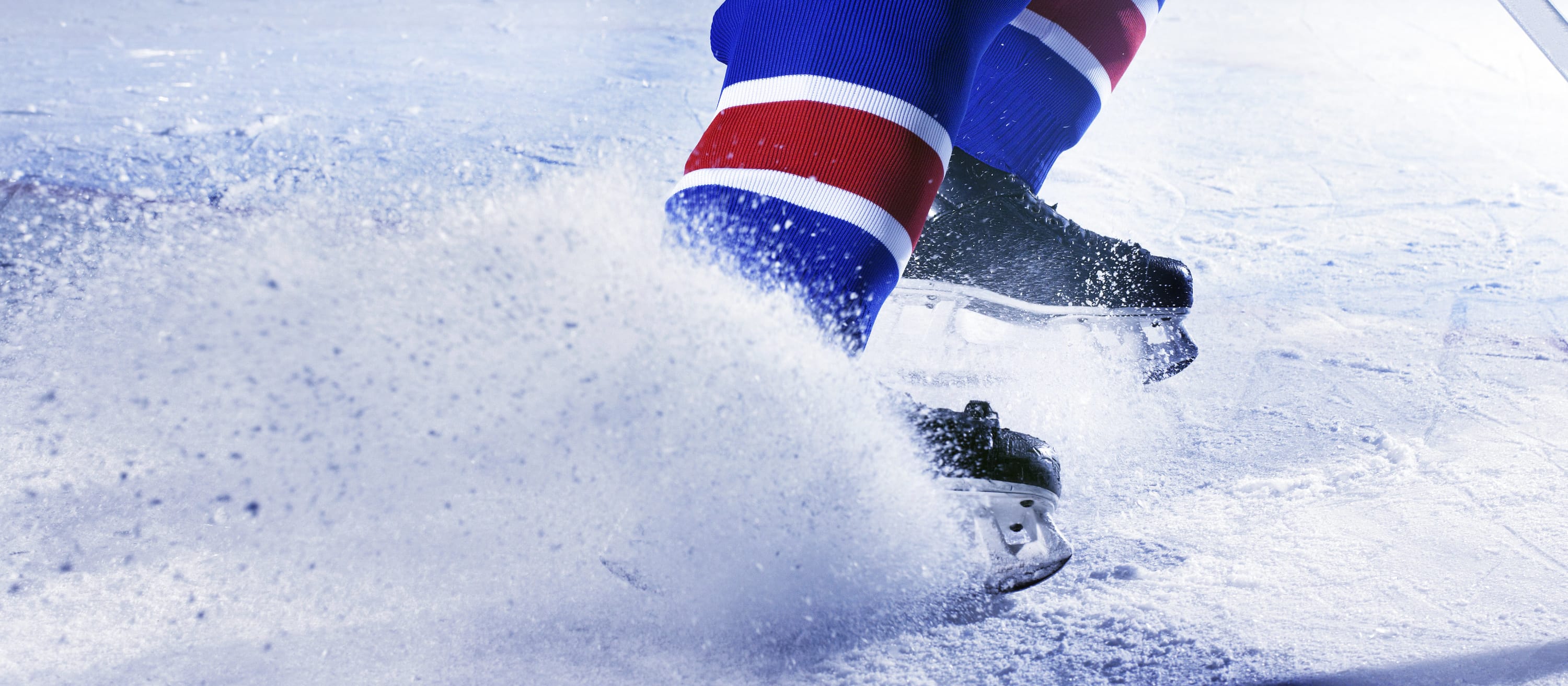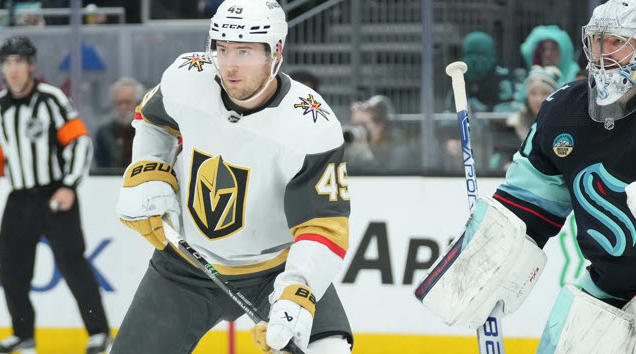Every two to three years, the NHL goes a little insane – finding ways to increase scoring, making the game more attractive for fans, limiting what players can do on the ice. As has been widely reported, scoring is down this season, and coming off a year in which Jamie Benn's 87 points won the Art Ross Trophy, the league is frantically trying to find ways to boost scoring, possibly inventing a problem where there might be none. Any solution will be to the detriment of a certain group of players.
The rules introduced following the 2004-05 lockout heavily enforced physical play on defense to the point where it seemed touching the attacking player was a penalty. The trapezoid behind the goal limited a goaltender's ability to play the puck. Why? Because Martin Brodeur and former Star Marty Turco handled the puck better than most defensemen and were able to clear dump-ins and start counterattacks. This rule seemed to have the inverse effect, as the game moved a bit slower and forced defenders into vulnerable positions to collect the puck and clear dump-ins. From a fan's point of view, a goalie leaving the crease can mean a ridiculously entertaining play could occur. Just ask Patrick Roy.
Goalies have been vilified in recent weeks largely for being large, as Maple Leafs coach Mike Babcock has been quick to note. His solution is to make the nets larger to compensate for the average goaltender size significantly increasing. The NHL
Every two to three years, the NHL goes a little insane – finding ways to increase scoring, making the game more attractive for fans, limiting what players can do on the ice. As has been widely reported, scoring is down this season, and coming off a year in which Jamie Benn's 87 points won the Art Ross Trophy, the league is frantically trying to find ways to boost scoring, possibly inventing a problem where there might be none. Any solution will be to the detriment of a certain group of players.
The rules introduced following the 2004-05 lockout heavily enforced physical play on defense to the point where it seemed touching the attacking player was a penalty. The trapezoid behind the goal limited a goaltender's ability to play the puck. Why? Because Martin Brodeur and former Star Marty Turco handled the puck better than most defensemen and were able to clear dump-ins and start counterattacks. This rule seemed to have the inverse effect, as the game moved a bit slower and forced defenders into vulnerable positions to collect the puck and clear dump-ins. From a fan's point of view, a goalie leaving the crease can mean a ridiculously entertaining play could occur. Just ask Patrick Roy.
Goalies have been vilified in recent weeks largely for being large, as Maple Leafs coach Mike Babcock has been quick to note. His solution is to make the nets larger to compensate for the average goaltender size significantly increasing. The NHL could install soccer goals in every arena and the Leafs would still struggle to score. Babcock, along with most coaches, also believe goalies are protected too much by the officials. The large goalies dressed up in comically large pads, however, could be corrected. Grant Fuhr won five Stanley Cups during the freewheeling 1980s with pads that were a fraction of the size they are today, as Coyotes netminder Mike Smith demonstrates.
Making goalie pads smaller seems to be one of the more feasible options if the league feels there is a dearth of scoring. It's certainly better than these ideas:
- Shaving the posts so shots kick into the goal rather than bounce away.
- Larger nets: again, this falls under the realm of penalizing goaltenders for being good at their job.
- Smaller creases.
- Making the nets even shallower so there is more room behind the goal.
Any change the league makes, coaches will adapt to it and figure out how to stop teams from scoring. Coaches are already figuring out 3-on-3 overtime and cycling the puck within the zone to keep possession. Coaching staffs will figure out how to adapt.
In order to increase scoring, the league should direct its referees to call more penalties, thus creating more power-play chances. This season, teams are seeing only 3.2 power-play chances per game. Doing this and banishing the trapezoid back to the hell where it belongs can increase scoring. Basically, much of the talk boils down to the league wanting to make sure teams can't play defense. The hubris, the audacity of them to try preventing goals!
Low-scoring games in the playoffs, and most times in the regular season, are incredibly exciting to watch. More scoring doesn't mean more excitement. Often, it means more mistakes and sloppy play. Nashville and Colorado didn't seem to have trouble scoring Saturday evening; likewise for Chicago, New Jersey and Los Angeles (all with four), while Florida and Tampa Bay played to a 4-4 tie, with the Panthers winning in the shootout.
Considering that scoring in the league is down to 2.67 goals per game through 258 games, power-play production is more valuable than ever.
Kyle Palmieri, RW, NJ – Acquired from Anaheim for a second-round pick during last summer's draft, Palmieri is proving to be a heady acquisition for Ray Shero and the Devils. The winger has always had some skill and potential, but he was buried on the Ducks' bottom six. Now in his native New Jersey, Palmieri is proving rather adept on the man advantage, as his eight power-play points are good enough for a five-way tie for third in the league through Saturday. He has three power-play goals and five helpers and sits with 14 total points on the season. Considering he's been seeing 2:32 of power-play time this season and has a healthy 20 shots on the man advantage, Palmieri should continue seeing chances. A team pegged by many, including myself, to struggle offensively, the Devils have been rather productive on the power play, clocking in at 22 percent, good enough for eighth in the league.
Palmieri has been seeing time at the point on the man advantage and his 20 power-play shots are more than Evgeni Malkin, Brent Burns and Dustin Byfuglien at this point of the season. More than half of his season's point total has come on the power play. He's seeing top-six minutes with the Devils and figures to be a large part of their offense throughout the season. If Palmieri's bouncing around on your wire, give him a look.
Vincent Trocheck, C/RW, FLA – Trocheck has been a subject of this column before, and he has shown a bit more consistency this week, with a point each in four of his last five games and three goals in that span. While only one of those four points came on the power play, it's a great sign for Trocheck that he's spreading his production out and delivering at even strength. Still, of his 13 points, an impressive six have come on the man advantage. Sure, three of those points were accumulated in one game, but Trocheck will see more chances on the power play than at even strength. It's worth noting that he played 1:52 during overtime in Saturday's shootout win over Tampa Bay.
Loui Eriksson, RW, BOS – The man who made up the bulk of the Tyler Seguin trade going back to Boston has been quietly productive for the Bruins' lethal power play, which is operating at an incredible 33.3 percent success rate. Eriksson has four goals and six total points on the power play, almost half of his season's 13 points. He's not the player who averaged 72.5 points for three consecutive seasons, but Eriksson still has skill and is seeing time on the league's top power play despite being largely disappointing since arriving in Boston.
Boone Jenner, LW, CLM – Jenner owns four power-play goals and six power-play points for the struggling Blue Jackets, delivering value on what was a late-round pick in most leagues. In some shallower formats, he could be kicking around in free agency. Columbus struggles at even strength, ranking 22nd in the league, but the Jackets' power play is sixth, converting at a 22.6 percent clip. Fifteen of their 45 goals on the season have been of the power-play variety. Jenner is going to benefit, especially considering what Johansen and Brandon Saad are doing alongside him. Nick Foligno is somewhere; if anyone knows where he is, please call Nationwide Arena.
Christian Ehrhoff, D, LA – Most defensemen among the top power-play producers were rather high draft picks, but Ehrhoff is doing yeoman's work for the Kings – all five of his points this year have been assists on the man advantage. Drew Doughty seemingly never leaves the ice, but Ehrhoff is second among Kings blueliners with 2:30 of power-play time per contest. The veteran doesn't shoot nearly as much as he used to, with just 25 shots through 15 games, but he could be of use in deeper leagues.
Rasmus Ristolainen, D, BUF – One of Buffalo's two first-round picks from 2013, Ristolainen is delivering for the soon-to-be-resurgent Sabres with two goals and three helpers on the power play. He's maturing as a defender and is now the top option on the fourth-best power play in the league.
As for the NHL and its hopes that scoring can increase, there are some more feasible options than making the nets bigger. When teams like Pittsburgh can't score, it's not entirely because the goalies' pads are too large or the net is too small. The Penguins are a disjointed team on offense despite having two of the best centers in the world and a premier sniper in Phil Kessel. The Pens have the second-worst power play in the league and simply pass the puck too much at times, always looking for the pretty play. These stars can't mesh offensively while they're gripping the stick a bit too tightly.






































